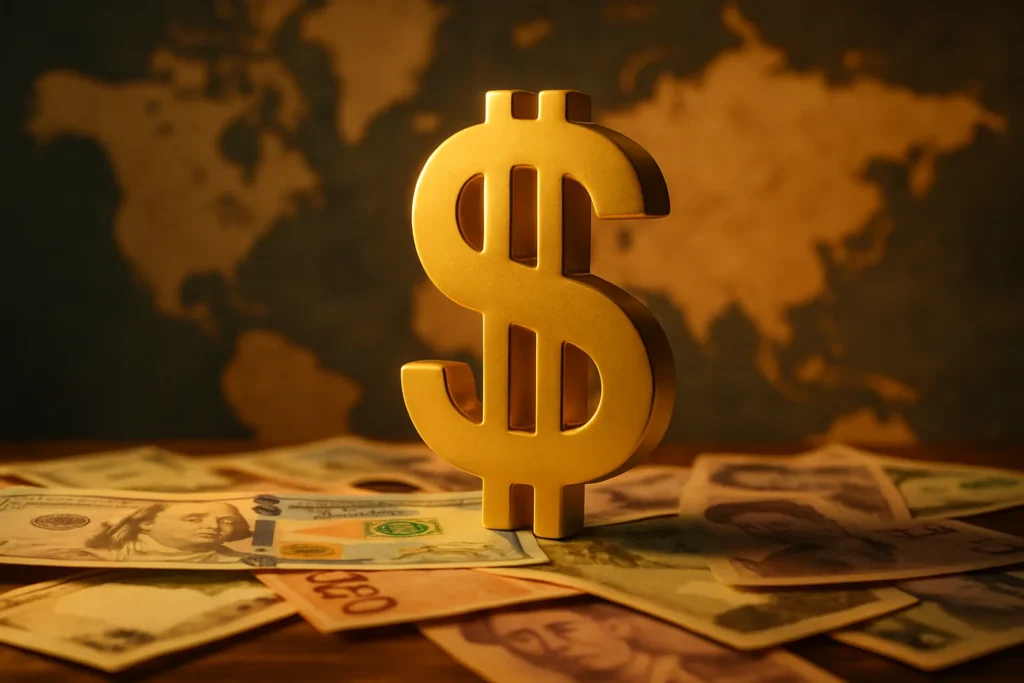Markets on Edge: Dollar Dominates Amid Tumultuous Diplomacy
Sudden surges in the U.S. dollar have become almost a barometer for global anxiety, and this week’s developments underscore that relationship. On Monday, the dollar index soared to 98.1, underscoring the power of American monetary policy and global nervousness in equal measure. While the financial world eyed the upcoming Federal Reserve Jackson Hole symposium for signals on future rate cuts, a different kind of drama played out in Washington, D.C.: high-stakes talks between President Donald Trump, Ukrainian President Volodymyr Zelensky, and a cadre of Europe’s top leaders.
For currency watchers, the dollar’s performance is rarely just about economics—often, it’s about geopolitics. The Trump-Zelensky summit included the likes of UK Prime Minister Keir Starmer and Germany’s Friedrich Merz, a visible show of Western unity as Ukraine’s war drags on. Trump—always the showman—proclaimed optimism about a swift resolution. Yet, as ever, the absence of real breakthroughs left markets oscillating between hope and skepticism. According to Bloomberg, political risk premiums are now baked into pricing across emerging market currencies, most notably the Brazilian real, which slipped as confidence in a global de-escalation remained elusive.
Brazil’s economic story paints a sobering picture. On Tuesday, the real languished near R$5.4368 per dollar, weighed down by slowing industrial growth and lackluster agricultural numbers. The IBC-Br index edged down 0.1% in June, and forecasted Q2 growth missed the mark—an indictment of a global economy still haunted by the specters of conflict and policy uncertainty. How does a South American producer stay afloat when the world’s power brokers can’t—or won’t—forge lasting peace?
Peace Talks and Empty Gestures: Can Diplomacy Stabilize Markets?
A swirl of diplomatic spectacle isn’t enough to convince investors that peace is truly at hand. Despite photo ops and upbeat statements from Trump, real progress towards a Ukrainian ceasefire remains frustratingly out of reach. The extended involvement of European leaders at the summit seemed less like a harbinger of agreement and more like an act of desperation. Investors have reason to doubt that public pledges alone can dampen the risks facing global markets.
Harvard economist Jane Chu summed up the sentiment in a recent roundtable: “Currency appreciation tends to correlate directly with perceived stability. But rhetoric without tangible change only fuels more uncertainty.” No ceasefire emerged from the recent Trump-Putin meeting in Alaska, but talk of a long-term security framework and promises of multilateral guarantees were trumpeted as steps forward. To those watching their 401(k)s or planning retirement, that kind of ambiguity does little for confidence.
“The dollar is strong today not because the world is stable, but precisely because it isn’t. Geopolitical risk feeds the greenback, even while it saps hope elsewhere.”
Fed policy is the other side of the coin—literally and metaphorically. The markets have priced in roughly an 85% chance that the Federal Reserve will cut rates by 25 basis points in September, according to CME Group’s FedWatch tool. Yet analysts at MUFG and ING echo a growing consensus: Fed Chair Jerome Powell is unlikely to signal overt dovishness at Jackson Hole. A combination of resilient U.S. inflation data and robust retail sales numbers militates against a more aggressive easing cycle. The cautious posture in monetary policy—what the Wall Street Journal described as “watchful waiting”—only strengthens the dollar further, adding to pressure on currencies across the globe.
Emerging economies like Brazil feel this acutely. When global investors flinch, capital flees to the U.S., and the real’s persistent struggles reflect more than just local politics. Technical analysis from Reuters shows the currency pair (USD/BRL) remains beneath its major moving averages—50, 100, and 200 days—with low volatility indicating a market neither bullish nor optimistic about Brazil’s near-term prospects.
Beneath the Numbers: Who Wins and Loses in a Strong Dollar Era?
For those who champion progressive economics—global equity, humanitarian support, and sustainable growth—the current iteration of dollar dominance rings alarm bells. A stronger greenback makes life more expensive for developing nations already struggling with sluggish growth and sovereign debt burdens. Each tick up in the dollar means higher costs for basic imports, steeper payments on dollar-denominated debt, and tighter budgets for social welfare.
Recent history provides a cautionary tale. During the 2014-2016 strong-dollar period, countries from Argentina to South Africa found themselves forced into austerity, curbing education and health spending under external pressure. The playbook hasn’t changed much—except now, the stakes are even higher, with a war in Europe and a U.S. leadership more focused on theatrics than consensus-building. What happens if the peace process falters yet again, or if central banks move too slowly to shield the vulnerable?
Beyond that, the technocratic fixes of coordinated monetary policy can only do so much. Financialization without real investment in diplomacy and social progress leaves both market and society teetering on the edge. A closer look reveals that policymakers still have tools at their disposal: increased fiscal support for those left behind, investments in renewables to stem reliance on imported fossil fuels, and a collective push for sustainable development. As progressive legislator Rep. Rosa DeLauro recently put it, “The measure of an economy isn’t its currency’s worth on Wall Street, but the dignity and security of the families who live with its consequences every day.”
What does this mean for you, the reader? If the dollar remains ascendant while diplomacy stalls, expect higher prices at home and more instability abroad. Social justice and shared prosperity require not just technocratic tinkering, but bold international cooperation and compassion—virtues still in short supply on the global stage. Holding leaders to account, demanding transparency in peace talks, and supporting policies that put people before profit are more urgent than ever. The world can ill afford another lost decade fueled by empty promises and unchecked volatility.

